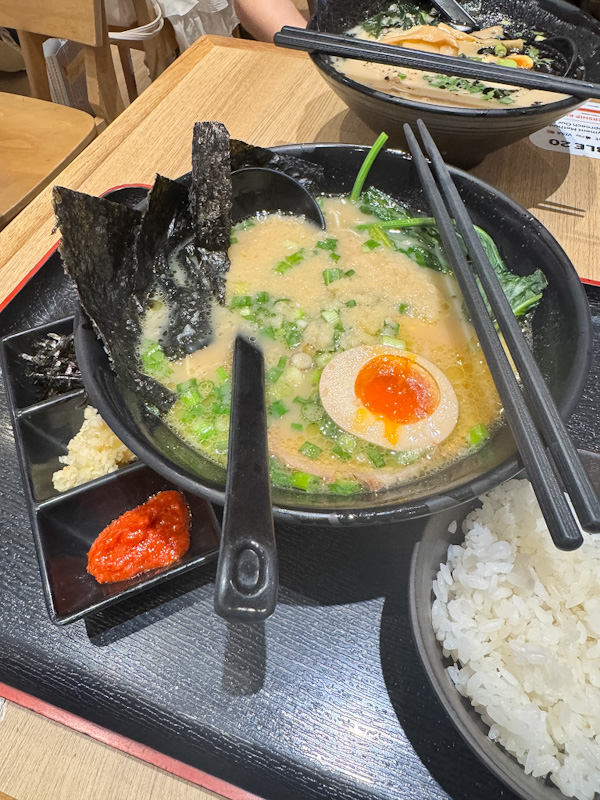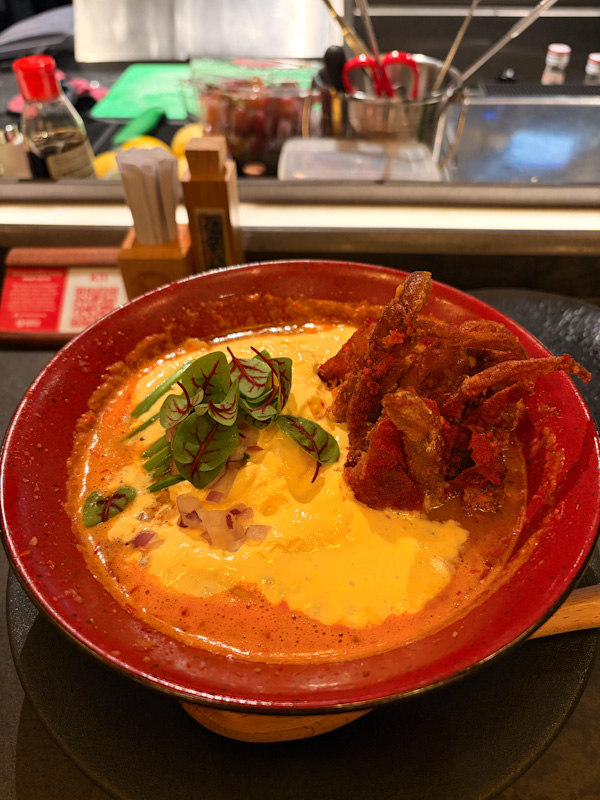Over the years, I’ve visited 38 out of Japan’s 47 prefectures, exploring everything from internationally renowned ramen spots to local hidden gems. Out of the four Michelin-starred ramen restaurants, I’ve had the chance to dine at two.
I recently wrapped up nearly five months of traveling across Japan, so here are my top ramen recommendations—perfect for anyone heading there for the year-end holidays.
Disclaimer: While I don’t live in Japan, I make an effort to visit every year when possible (except for the Covid years, of course).

Most Delicious Ramen
On our ramen journey over the years, we’ve sampled just about everything—from the crowd-favorite Tonkotsu to the more adventurous Motsu. We’ve experienced ramen in high-end fine dining settings and enjoyed bowls served in humble clay pots. Today, we’re excited to share with you our top 3 picks for the most mouthwatering bowls of ramen!
#1 Ginza Hachigo, Ravioli Gourmandise Chuka Soba
Chuka Soba, or “Chinese Noodles,” is what ramen was originally called when it first arrived in Japan through Chinese migrants. Known for its clear soup and rich, meaty flavors, it often holds onto its origins in certain ramen chains, which still refer to it as “Shina Soba” and offer a more traditional pork-heavy taste. But what you’ll find at the one Michelin star establishment (~2023), Ginza Hachigo is a modern twist on this classic. The head chef, who’s French-trained, brings in techniques from French cuisine to craft a consommé-style soup, and notably, there’s no tare—a key seasoning component in most ramen that adds complexity. This fresh take keeps the flavors bold and elegant, offering a refined experience while staying rooted in ramen’s origins.

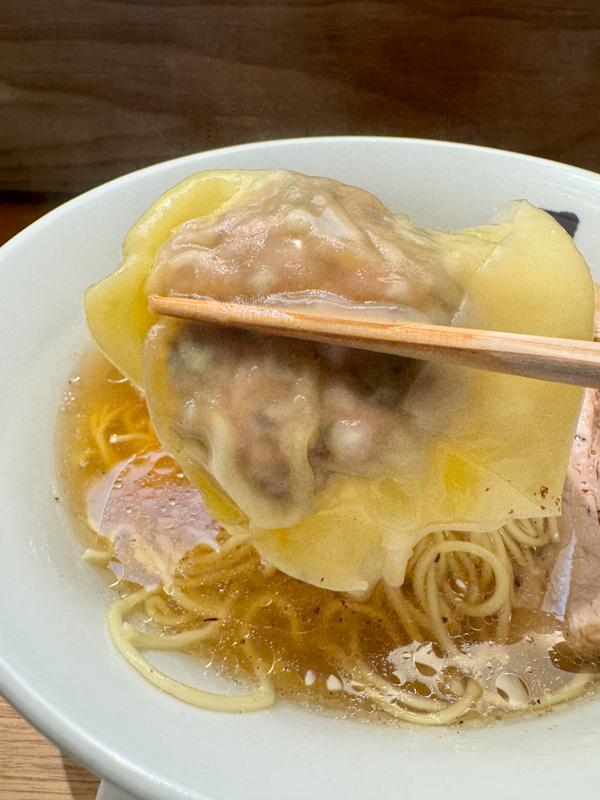
The base version of the dish starts at 1,200 yen, but the real indulgence lies in the special 2,200 yen version that features a truffle and foie gras ravioli. The medium-thin noodles are served al dente, boasting a firm yet smooth texture with a subtle wheat flavor. The soup, inspired by French culinary techniques, is a consomme-like mix of duck, chicken, cured ham, and a stock enhanced by scallops and mushrooms, creating a rich and clear broth without traditional tare. The chashu pork belly adds variety with its blend of firm, tender, and fatty textures. The highlight is the luxurious ravioli, filled with truffle and foie gras, elevating the entire dish.
The restaurant has introduced online reservations in recent years, making it easier to secure a spot at this renowned ramen shop. However, reservations are only released at 9:00 AM (JST) every Saturday for the following Tuesday to Sunday. Seats tend to get fully booked within an hour, so you’ll need to wake up early and act fast if you want to snag a table!
#2 Hakata Ikkousha Sohoten, Tonkotsu Ramen
Hakata Ikkousha Sohonten in Fukuoka is a must-visit for fans of bold, flavorful Tonkotsu ramen. Known for its rich, intense broth, this flagship location is dedicated to serving traditional Hakata-style pork bone ramen. The chashu (braised pork) is meticulously prepared, enhancing the overall experience. The authentic Japanese decor adds to the warm and inviting atmosphere, perfect for both locals and travelers. It’s worth noting that as the headquarters, Sohonten has a different menu compared to other Ikkousha chain locations.
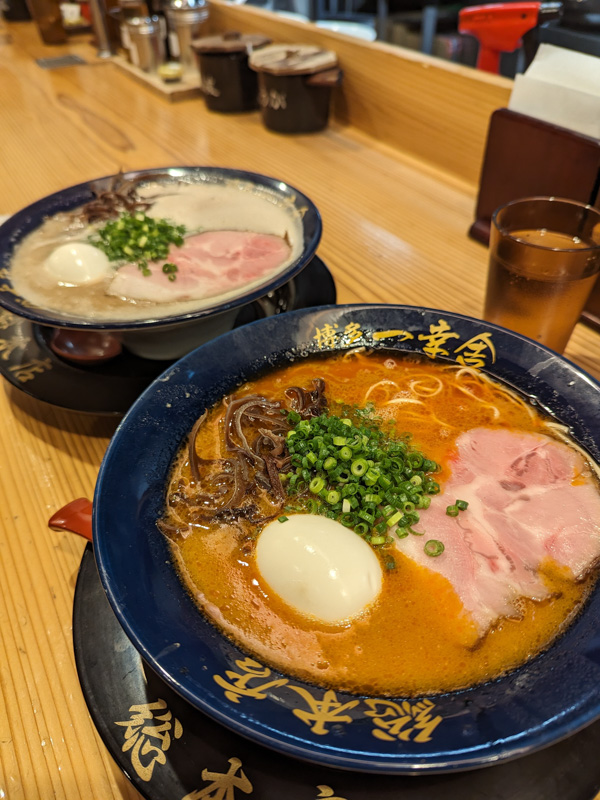

The thin, flat noodles are dense and have a great al dente bite, plus they taste fantastic. The soup is rich but surprisingly not overly meaty, leaving a sweet aftertaste, and those little bits of pork fat make it extra indulgent. It’s thick and foamy, but the sweetness of the pork shines through, creating a nice balance. The meat starts out a bit undercooked but transforms into tender, shabu-shabu-style slices once mixed in, bringing a delightful springiness. And the toppings? The marinated egg has a perfect molten yolk, and the green onions and black fungus add a nice crunch. Overall, it’s an unforgettable bowl of ramen! Both standard and red version are equally amazing so make space to try them both!
Most Memorable Ramen
You might be curious about the difference between “most delicious” and “most memorable.” Beyond just tasting great, some unique ramen dishes might not resemble classic ramen much, but they leave a lasting impression that sticks with you.
#1 Ramen Hiiragi, Tomato Ramen
Ramen Hiiragi in Nagasaki is a favorite spot for its unique tomato-based ramen, which features creative ingredients like eggplant and spinach for extra depth. They also serve traditional tonkotsu ramen, known for its rich and savory broth. The shop is small but cozy, with friendly staff and great service. Diners often recommend trying both the tomato and tonkotsu ramen to get the full experience. For us what remains unforgettable is their tomato ramen. Without saying, we will travel all the way to Nagasaki one way just to relive the moment.
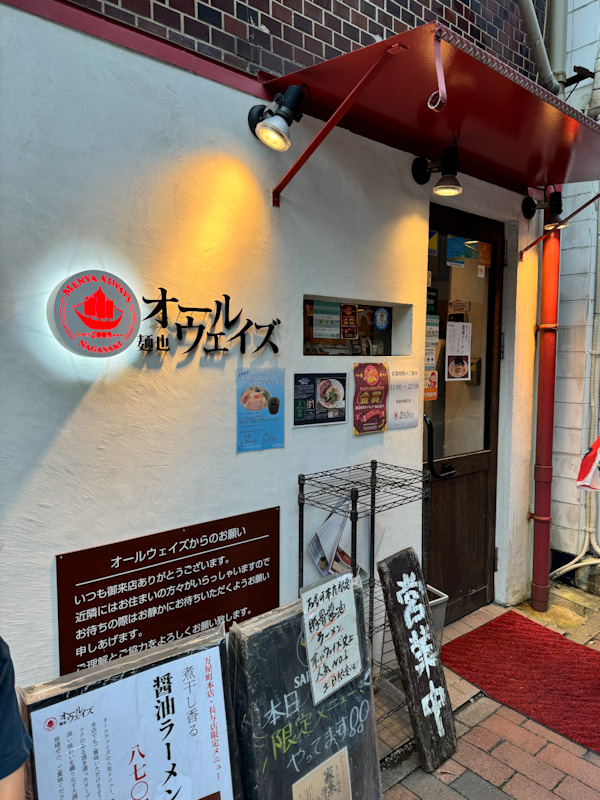
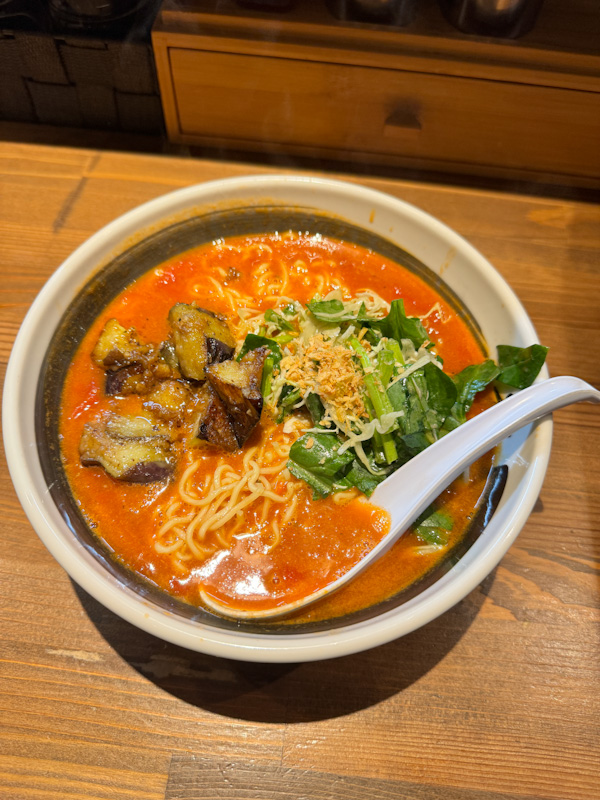
The ramen features thin, curly noodles that are firm and dense, offering a unique texture. They’re served al dente with a distinct woody wheat taste, making for a satisfying slurp. The soup is a rich, creamy tomato bisque-like broth with a sweet and savory flavor, hinting at cheese and a spicy tang, reminiscent of pizza. Surprisingly, the dish lacks traditional meat, instead showcasing extraordinary roasted eggplant that adds a deep, woodsy aroma and sweetness, making it a worthy substitute. Other toppings include greens, bits of tomato flesh, fine strands of cabbage, and egg white, which together create a layered flavor profile and an interesting mouthfeel.
Located in the heart of Tokyo, this accessible ramen spot features the signature “Ramen Fromage,” a creative fusion of Italian and Japanese cuisines. The dish combines a rich, creamy ramen broth infused with Italian cheese, enhancing the broth’s depth with savory umami. Instead of the usual chashu, unconventional toppings like prosciutto ham are used, making for a unique dining experience that highlights the restaurant chain’s innovative approach and flair for culinary creativity.


This ramen features medium-thin noodles with a translucent look, offering a firm, springy texture and a hint of earthy sweetness. Though softer than typical ramen, they pair wonderfully with the creamy cheese, especially when following the suggested pairing on the instruction card. The broth, while seemingly simple, boasts a complex flavor profile with mellow savoriness and deep sweetness. Once the melted cheese is mixed in, it transforms into a creamy, umami-rich delight. Instead of traditional chashu, prosciutto ham adds an Italian twist, with its salty slices enhancing the dish’s depth. Topped with soft cheese globules and green onions, the mellow cheese complements rather than overwhelms. A side of “beautiful brown rice” turns leftover soup into a risotto-like dish, adding a chewy texture and elevating this already complex meal.
#3 Taishio Ramen Dounoura, Sea Bream Salt Ramen
Taishio Ramen Dounoura in Naruto, Japan, is famous for its unique ramen, especially its “Taishio” (sea salt) ramen. Known for high-quality ingredients and careful preparation, the broth is clear, light, and refreshing, expertly balancing sea salt with umami-rich components. Their signature sea bream ramen, or “tai ramen,” features a delicate broth made from high-quality sea bream, providing a light yet rich umami flavor. The sea salt enhances the broth’s natural taste, making it a celebrated dish in Naruto, Tokushima Prefecture, without overpowering the palate.
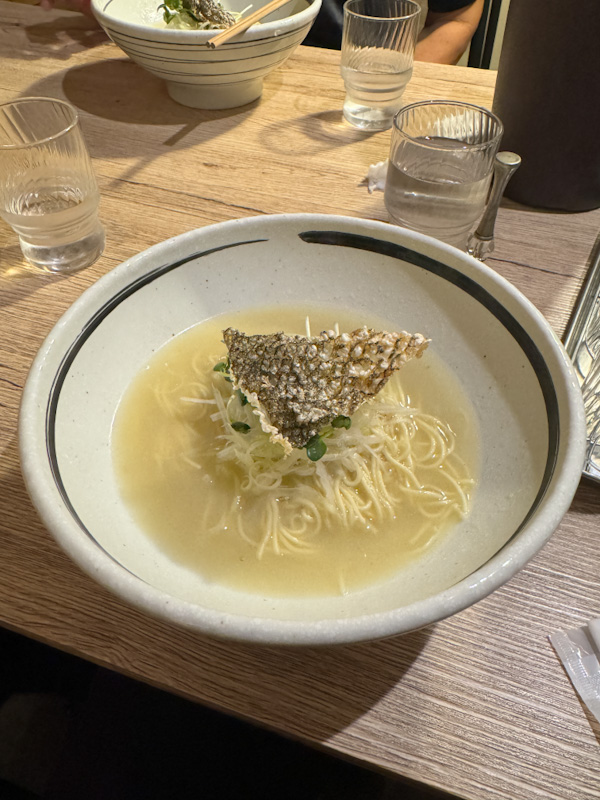
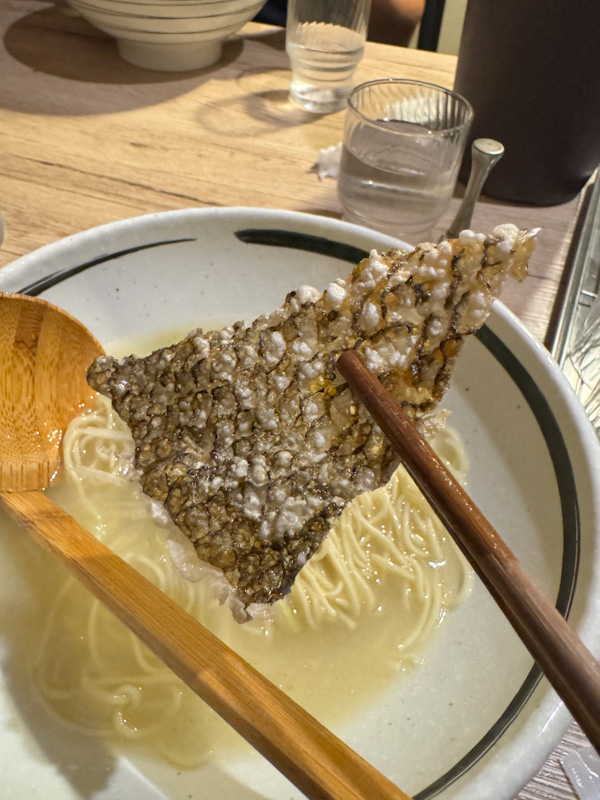
The Sea-Bream Salt Ramen features medium-thin, straight noodles served al dente with a satisfying snappy bite and a silky texture that makes slurping a delight, complemented by a pleasant earthy wheat flavor. The broth, made from sea bream, has a white, milky appearance with a mild fishiness that’s pleasantly creamy and sticky, offering a smooth, layered sweetness balanced by mellow saltiness. Instead of traditional meat, the dish showcases a thin triangular piece of crispy fish skin atop shredded onions, providing a crunchy yet melt-in-your-mouth texture and a nice umami sweetness that’s addictive. Other toppings like white onion shreds and pea sprouts add some layering to the flavor. Overall, this ramen offers a unique and refined experience, setting itself apart with its silky noodles, creamy broth, and innovative crispy fish skin.
Best Classic Shoyu Ramen
The classic shoyu ramen is probably the most commonly found variant in Japan. It’s a staple for its savory, soy sauce-based broth, typically made from a mix of chicken, pork, and sometimes seafood, simmered with ingredients like onions and kombu.
#1 Ramen Shibahama, Shoyu Ramen
Ramen Shibahama is renowned for its unique 3-course ramen experience, making it a standout spot. They handmake their noodles every morning using premium ingredients and have earned accolades like Tabelog’s East Japan Top 100 Ramen and Rakuten’s #1 Ramen with a stellar 4.95/5.00 rating. Besides ramen, they also serve fried rice, gyudon, and oyako don for breakfast. The shop’s popularity is evident, with fans traveling two hours from Tokyo and lining up as early as 5 a.m. to secure a spot. Items often sell out within the first two hours, even on weekdays. The 3-course meal includes Mazesoba, Tsukemen, and Shoyu Ramen in half portions, so be sure to come hungry for 1.5x ramen. It starts at 10 a.m., but the shop opens at 7 a.m., and the experience is referred to as “Ramen Kaiseki” or “Wheat Samadhi” (小麦三昧).

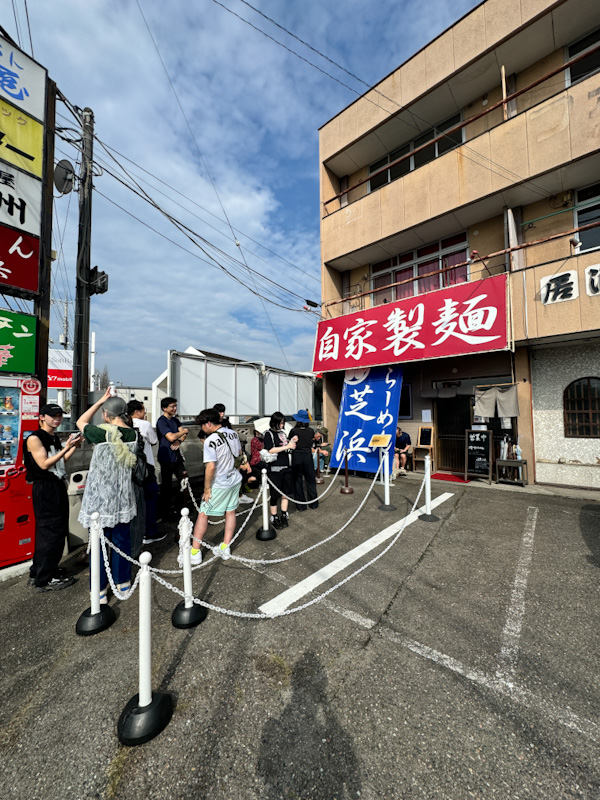
The ramen features medium-thin, straight noodles that are firm and served al dente, offering a snappy bite and a satisfying earthy wheat flavor. The soup is a flavor adventure: glistening but not oily, it starts with sharp fish notes from mackerel and bonito, followed by a clammy sweetness and tangy shoyu undertones, rounded out by the meaty flavors of chicken and duck. For meat, you get a generous slice of melt-in-your-mouth pork chashu that crumbles beautifully, alongside a slightly undercooked piece of lean chicken that continues to cook in the hot soup. The chicken has a surprising sweetness. Toppings include crunchy, juicy bamboo shoots with a fruity sweetness and a marinated egg with a gooey golden yolk.
#2 Sano Ramen Ittetsu, Shoyu Ramen
Sano Ramen, named after the town of Sano, is renowned for its light, easily digestible taste, enhanced by the use of fresh, clear spring water in both the soup and noodle-making process. The handmade noodles, crafted with green bamboo, reflect traditional techniques often showcased in documentaries, where chefs knead the dough with their feet or cut it with giant knives. This meticulous approach to noodle-making establishes Sano as a hub of craftsmanship. Among the many ramen shops in Japan, Ittetsu stands out for its commitment to handmade noodles. With over 150 ramen establishments in a town of just over 100,000 residents, Sano boasts the highest ramen store-to-population ratio in Japan, solidifying its reputation as the ultimate ramen destination.

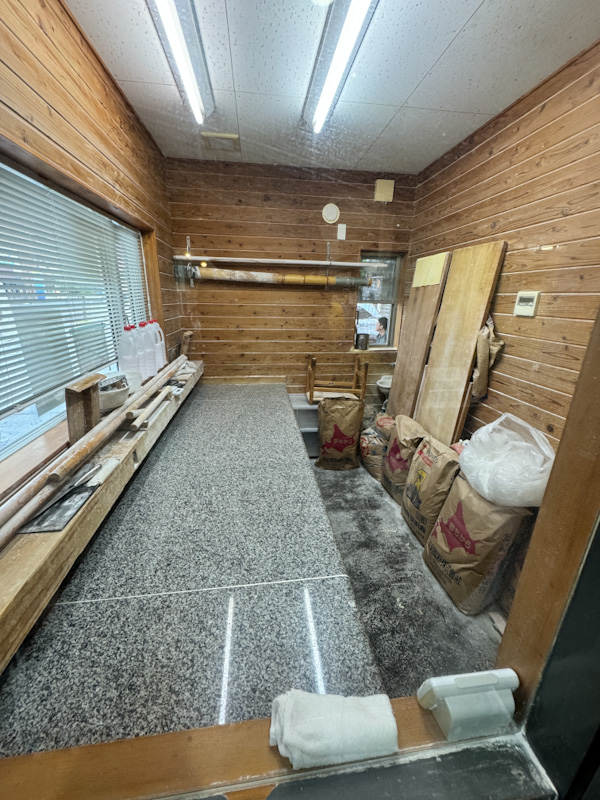
The ramen features handmade, flat Sano-style noodles that vary slightly in thickness, adding to their charm. They have a light, earthy wheat flavor and a soft, chewy texture reminiscent of udon, making each bite satisfying. The soup offers a classic Shoyu taste but is lighter than typical Tokyo versions, with a hint of sweetness from the chicken base that provides warmth. A side of Yuzu Kosho sauce adds a tangy spiciness when mixed in. The meat is exceptionally tender, falling apart easily and delivering a savory kick with sweet undertones. Toppings include classic options like bamboo shoots, green onion, pea sprouts, and fish cake; while the bamboo shoots add crunch and the greens offer freshness, none of the toppings particularly stand out, making them solid but unremarkable.
Best Classic Miso Ramen
Classic miso ramen is known for its rich, hearty flavor derived from miso paste, which gives the broth a deep, savory taste often enriched with chicken or pork stock and vegetables. While originating from Hokkaido, the biggest producer of miso in Japan is actually Nagano Prefecture. Known for its high-quality soybeans and traditional fermentation methods, Nagano is a major center for miso production, particularly Shinshu miso, which is prized for its flavor and quality.
#1 Ramen Misoya, Miso Chashu Ramen (Millstone)
Misoya (らぁめん みそ家) is a cherished local spot in Nagano City, famous for its flavorful miso ramen. The broth is crafted with Shinshu miso, which adds a delightful smokiness, enhanced by stir-fried vegetables. Their flagship miso ramen showcases the esteemed Shinshu miso, known for its earthy, sweet, and nuanced flavors that embody the dish. Additionally, Misoya offers a variation featuring locally sourced millstone wheat noodles for a small extra cost, making it a worthwhile choice for those with discerning tastes.

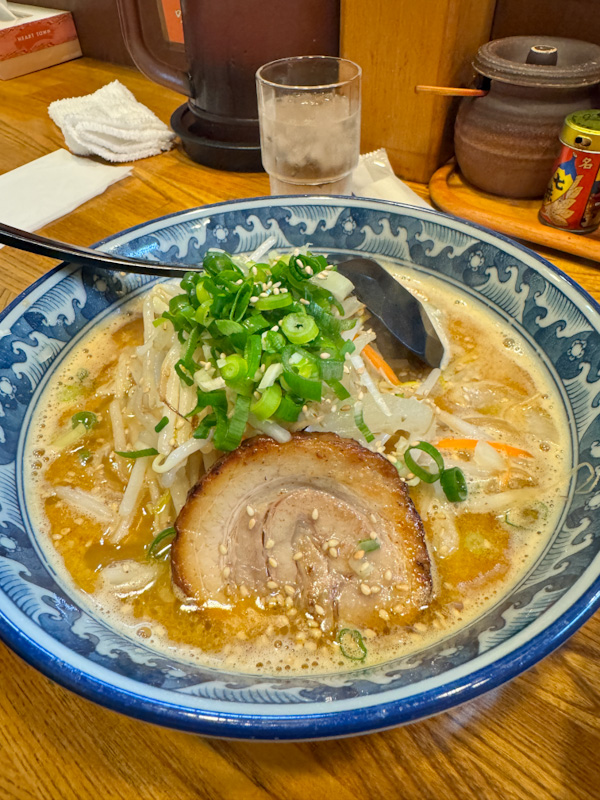
This ramen features thick, angular-cut noodles with an earthy hue, delivering a satisfyingly firm and chewy texture, perfect for slurping. Their wholesome earthiness is enhanced by the meticulous handmade process. The broth, made from a blend of chicken, pork, and Shinshu miso, offers a savory punch with sweet, nutty undertones and hints of garlic, creating a complex flavor profile. The grilled chashu is lean yet tender, with charred edges and a rich marination that provides a savory sweetness. Toppings include crunchy, garlic-infused stir-fried vegetables like white onion, bean sprouts, and carrots, adding a refreshing contrast, while negi contributes to the dish’s overall depth.
#2 Mensho Sakura, Sazo Miso Ramen
Mensho Sakura is a beloved ramen spot in the heart of Matsumoto, just steps from the iconic Matsumoto Castle. It’s renowned for its commitment to authentic Shinshu ingredients, particularly the esteemed Anyoji miso, which undergoes a meticulous fermentation process for years, resulting in a dark paste with a complex flavor profile. The shop’s popularity is clear from the queues that form even before opening on weekday mornings. They also offer instant versions of their ramen and gyozas, available at convenience stores and vending machines for added convenience.
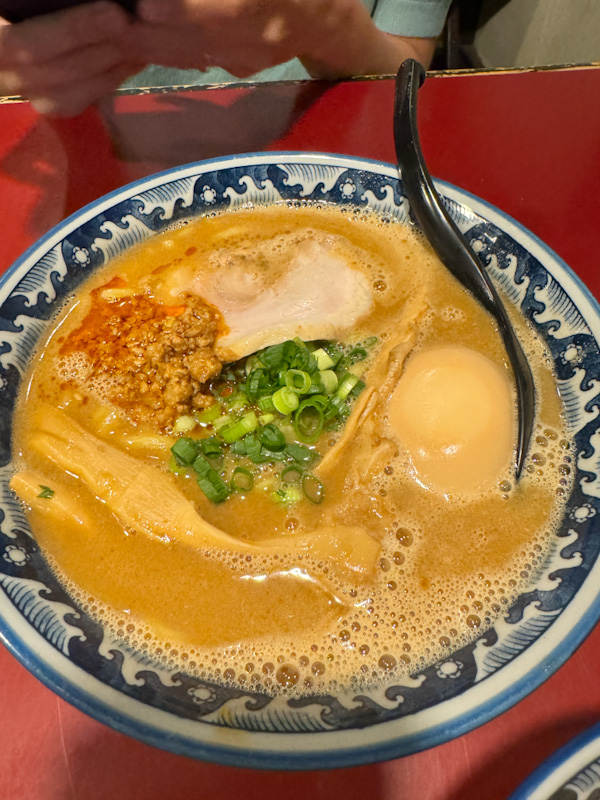

The ramen features medium-thick noodles with rounded edges, offering a remarkably smooth texture that slips easily as you slurp. They provide a satisfying chewiness and subtle sweetness from the wheat, with a firm bite enhancing the overall enjoyment. The soup is thick and gravy-like, showcasing a sweet front with robust Anyoji miso flavors and deep earthy savoriness, leaving a rich, lingering taste and gentle warmth in the throat. The chashu is exceptionally tender, melting upon touch, with a well-balanced marination that highlights sweetness and meaty richness without being overly salty. Toppings include minced meat, tender bamboo shoots with a slightly funky fermented taste, and negi. An extra topping of Ajitama (marinated egg) adds layers of flavor with its mild saltiness, mellow sweetness, and tea-like undertones, elevating the overall experience.
Best Classic Shio Ramen
Shio ramen while looking plain and simple, is often regarded as one of the most difficult ramen to make due to its need for a delicate balance of flavors and textures. The clear broth must avoid excessive saltiness while maintaining a harmonious flavor profile, requiring precise seasoning. Achieving clarity and purity in the broth necessitates meticulous straining and careful cooking. High-quality, fresh ingredients are essential, as the lighter broth emphasizes subtle flavors. This dish demands skill in broth-making and a deep understanding of umami to ensure each component shines without overpowering the others, making it a complex challenge for chefs.
#1 Tsuta Japanese Soba Noodles, Shio Ramen
Tsuta, the first ramen shop to receive a Michelin star in 2016, offers a unique dining experience characterized by meticulous ingredient selection and precise preparation techniques. The artistry of Tsuta’s ramen is evident in its visual presentation, aromatic appeal, and balanced flavors. The dining experience is further enhanced by an instructional manual for patrons to fully enjoy each component of the meal. Tsuta is also known for its experimental approach, with the menu periodically refreshed, leading to varying reviews. However, the restaurant consistently provides a memorable culinary journey that exceeds expectations.

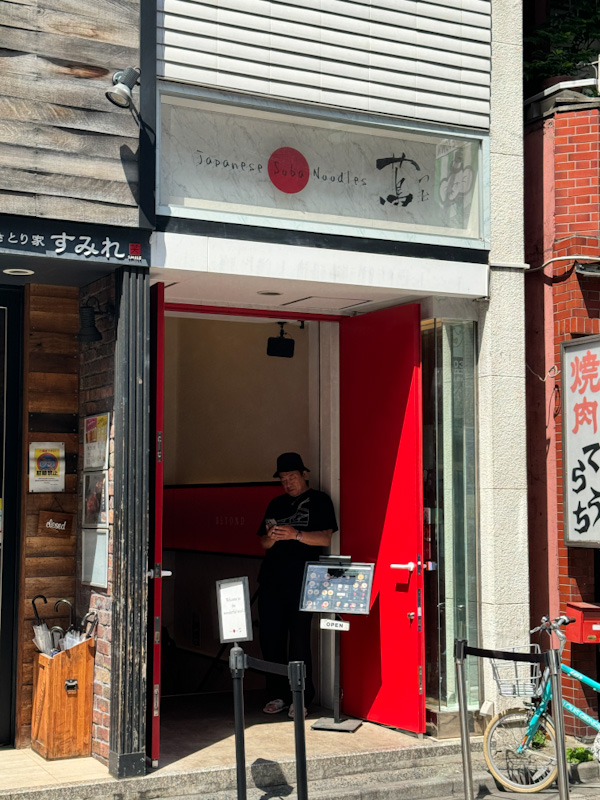
The Shio broth was light and nuanced, with a smooth interplay of flavors that made it hard to identify its main base—be it clam, chicken, fish, or a blend. The meat selection was luxurious, featuring A5 Japanese Black Beef with subtle sweetness, Iberian Bejota Belly that was savory yet firmer, and Kurobuta Pork Loin, which, despite being drier, balanced nicely with its marination. The toppings were a highlight, including olive powder, bottarga sauce, mushroom duxelles, sun-dried tomato, bamboo shoot, and kujo leek, all contributing to a harmonious and intricate flavor experience.
Tucked behind a speakeasy-style entrance, Menya Iori delights visitors with its whimsical interior and comfortable ambiance, featuring high ceilings and playful decor like a tree-trunk washroom with Totoro and hidden magic books beneath tables. The ramen here showcases culinary artistry, blending a light chicken and pork broth with three types of seafood for a harmonious flavor.
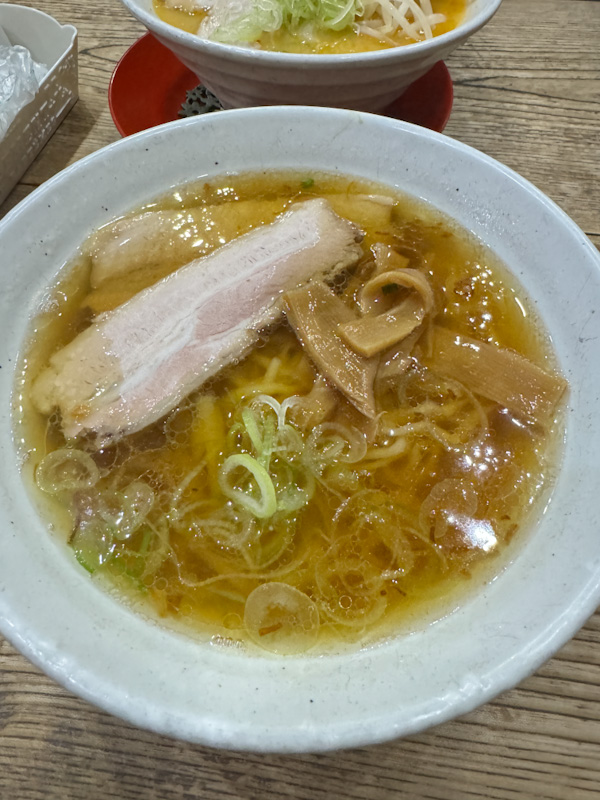
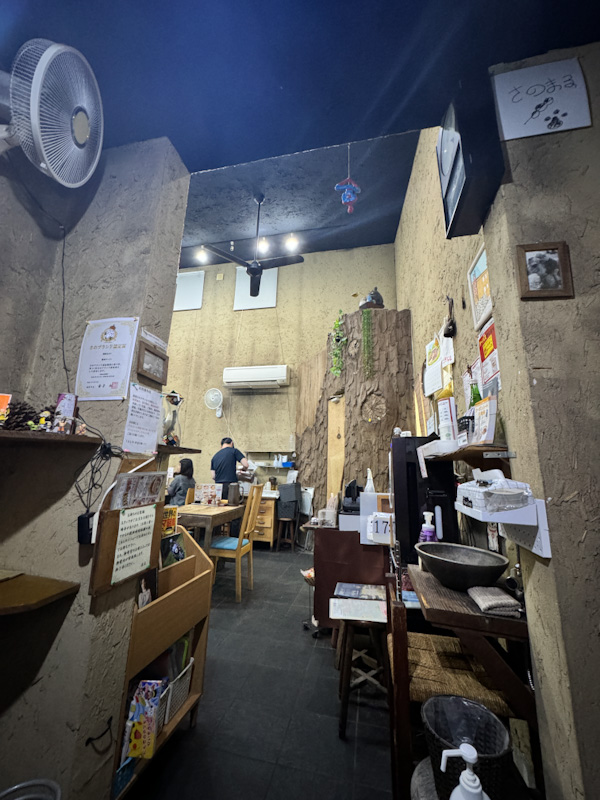
The ramen at this spot features classic handmade Sano noodles that are medium-thick with a flat profile, delivering a silky-smooth texture and a satisfying springy bite. The earthy wheat flavor shines through and the broth balances gentle umami notes reminiscent of the sea with a touch of sweetness, and despite being Shio ramen, it carries hints of Shoyu, adding depth to the flavor. Their commitment to quality is evident in the careful selection of Higeta soybeans for their soy sauce, resulting in a mellow yet rich flavor profile that tantalizes the palate. The chashu is expertly prepared, offering tenderness and a perfect balance of flavors, with a thin seasoning that enhances its natural meatiness. Toppings include crunchy bamboo shoots and green onions, along with mixed pepper and Shichime powder for an extra kick, rounding out the dish nicely.
Best Classic Tonkotsu Ramen
Ah, the classic Tonkotsu! You might know it from popular spots like Ichiran and Ippudo, but if you’re exploring Japan, there are some less obvious gems worth trying.
#1 Shin Shin Ramen, Tonkotsu Ramen
Shin-Shin’s soup is a beautifully crafted blend of locally sourced ingredients. The tonkotsu base is made by simmering pork belly and bones with miso, sake, and vegetables from the area. It also incorporates chicken bones from Saga Prefecture’s famous “Arita Chicken” and fresh pot herbs from Kyushu, creating a rich flavor profile. After a careful 24-hour cooking process to eliminate any astringency, the result is smooth and flavorful. The roasted pork fillet is prepared using a traditional soy-sauced boiling method passed down through generations, adding a historical touch to their culinary artistry.


Hakata Shin Shin Ramen features incredibly thin noodles that resemble angel hair pasta, offering a unique slurping quality. They have a firm, al dente bite with a distinct wheat flavor that may be an acquired taste. The soup has a rich brix reading of 10, typical of classic Hakata Tonkotsu, but it’s slightly more fluid and light, with a subtly sweet Tonkotsu base complemented by savory tare notes, resulting in a clean aftertaste. The braised pork is perfectly balanced with sweetness and savoriness, delivering a tender, flavorful experience thanks to its deep marination and melting fatty bits. While the toppings—black fungus and negi—are simple and don’t stand out much, the marinated egg is a highlight, with its well-balanced flavor enhancing the overall dish.
#2 Wanwanken Ramen, Shina Soba
Not your usual classic Tonkotsu I guess, but it sure is for the folks in Tokushima. Wanwanken Ramen, situated in Aizumi Town, Tokushima, is celebrated for its rich Tokushima-style ramen. Established in 1998 and named after baseball legend Sadaharu Oh, the restaurant serves a hearty pork-based broth that delivers a robust flavor. The ramen is typically topped with pork belly, a raw egg, and green onions, making for a satisfying meal.

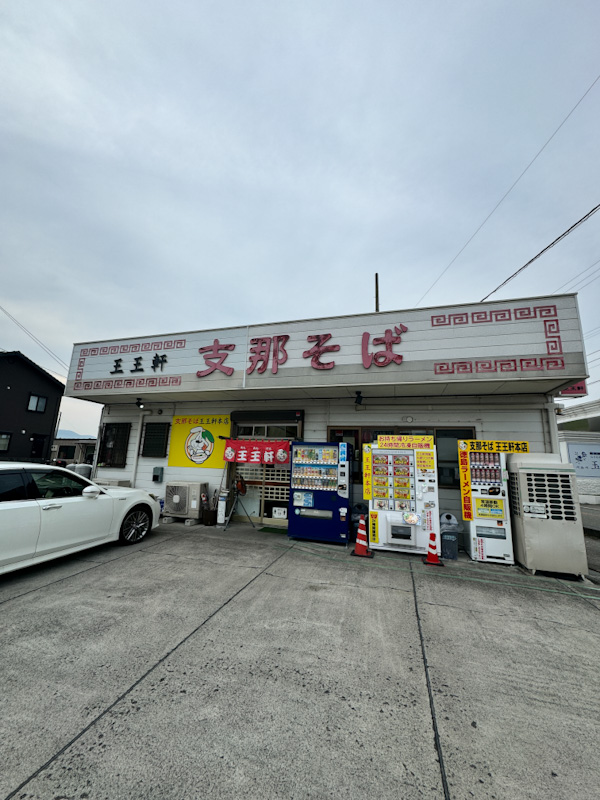
Shina Soba with Raw Egg provides a rich and hearty ramen experience. The medium-thick noodles are firm and have a wholesome wheat flavor, served al dente for a satisfying bite. The thick, gravy-like soup boasts a strong pork taste and grainy texture, enhanced by Shoyu flavor and subtle sweetness, with the raw egg adding creaminess and richness. The deeply marinated pork, featuring a mix of textures from thin slices to firmer pieces, is flavorful and well-balanced. Toppings include slightly tough bamboo shoots, crunchy beansprouts, and the transformative raw egg, which elevates both flavor and texture. Overall, this dish is a savory delight perfect for hearty ramen lovers.

And so here it is. After eating more than 87 bowls of ramen during my 5 months trip in Japan, these are 13 of my favourites from various regions of Japan.

